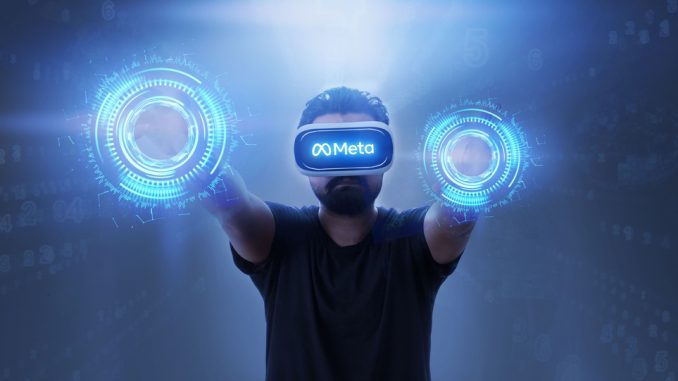
Facebook changed its name to Meta in 2021. Mark Zuckerberg stated that he wanted to create a metaverse to be ‘the next Internet’.
We marketers began to imagine what digital marketing might look like in a virtual world.
While the idea of the metaverse can still seem mysterious to some brands, it is becoming more common for them to see the potential that the metaverse offers to connect with their audiences in new ways and create memorable brand experiences.
The metaverse is predicted to be an $800billion market by 2024. It’s not going away any time soon and the potential opportunities offered by metaverse technology seem endless.
The metaverse seems to be the most popular buzzword on the internet right now, from memes about Mark Zuckerberg’s avatar to NFTs or virtual concerts. But what exactly is the metaverse?
What does this have to do with digital marketing? Kobe Digital will provide the breakdown on metaverse technology. This blog will help you to distinguish fact from fiction and explain what the metaverse can do for your digital marketing strategy.
What is the Metaverse?
The metaverse, as it is commonly known, is an online digital universe that users can explore using virtual reality (VR), or augmented reality. Users create avatars to move around a 3D world that allows them to interact with the environment and others.
Although the concept of a “metaverse” is not new, it was first used in science fiction thirty years ago. This novel was a remarkably accurate description of the metaverse, which is a parallel online universe that could be accessed via VR headsets.
Science fiction is science fiction, right? The metaverse is on the verge of becoming a reality. Some argue it already is.
Facebook (now Meta), described the metaverse in a press release as “a collection of virtual spaces that you can explore and create with people who are not in the same physical space.” You can connect with your friends and work, learn, shop, create and much more.
Today’s most prominent examples of the metaverse are Fortnite, Roblox, Minecraft and Roblox. These platforms use virtual reality to create more sophisticated online worlds.
These platforms allow users to move around a virtual world, create avatars, and interact with other users. They can also buy products or attend virtual events.
These spaces offer a vast market opportunity, even if you’re not familiar with them. Roblox claims 202,000,000 active users as of April 2021.
The Metaverse Explained
It is difficult to separate science fiction from fact and define the metaverse. This is partly due to the fact that companies like Microsoft and Facebook (Meta), are building their own versions. The term is fluid and constantly changing.
Although it can be difficult to define the metaverse, there are many key characteristics that make something a metaverse. Matthew Ball, a venture capitalist, has identified some key characteristics of metaverses.
- An online world that is fully functional. It should allow users to interact and move in the same way as they would in real life. There are opportunities to sell, create, and interact.
- Exists as in real-time . is a metaverse concept of time which matches the real world.
- Always be active. The metaverse is not a game with limited options and a fixed beginning, middle and end. They don’t end when users leave them and can continue indefinitely.
- Each user has an agency. They have the freedom to choose what they do in the metaverse. They can also be doing different things at once. You can create your own content, which you and others can enjoy.
What is Metaverse Marketing?
Marketers are always trying to stay on top of technological developments, so it’s not surprising that metaverse marketing is a hot topic in digital marketing.
The line between real and virtual worlds is becoming increasingly blurred. Metaverse will be a place where people can spend more time, interact with brands, and even purchase virtual products.
To stay relevant to Gen Z and millennial audiences, brands are shifting their digital marketing strategies towards the metaverse. They are the most avid adopters of the metaverse.
Gen Z users spend twice as much time in the metaverse socializing than they do in real-life. Even though many users are young, their influence is only going to increase.
Examples Of Metaverse Marketing Strategies
Create Virtual Experiences
Metaverse technology is being used more and more by brands to increase brand awareness and provide an exciting experience for their customers.
Vans, a shoe and skateboard brand, teamed up with Roblox to create a Virtual Skate Park where users could learn their skills and also purchase Vans products.
In-World Purchases
A growing number of consumers blur the line between buying in the real world and online, with 65% of Gen Z customers having purchased virtual items that exist only within an online environment.
The in-game purchasing market is expected to reach $74.4 billion by 2025.
Fortnite has partnered with luxury fashion retailer Balenciaga to create virtual clothing and accessories that avatars can buy.
Roblox recently sold a digital Gucci bag for over $4,100. This was more than the item’s actual-life value.
Hosting Virtual Events
Virtual concerts and events that allow fans to connect with stars from their homes are becoming more popular in the metaverse. Roblox’s virtual concert featuring Lil Nas X attracted over 33 million viewers.
The post Why The Metaverse Is The Future Of Digital Marketing appeared first on Kobe Digital.

Leave a Reply